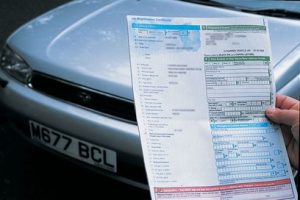The Nation’s Largest Retailers Are All “Shook Up”
The lead article in this week’s Automotive News is entitled “Shaking up the pricing model.” In this article, reporters Amy Wilson and Donna Harris profile the new pricing strategies of some of our largest automotive retailers. The profiled dealers are piloting pricing strategies that specifically and deliberately limit negotiation. While I applaud these large retailers for arriving at the conclusion that vehicles need to be priced to sell, not to negotiate, I believe they are still not “quite there” in terms of understanding or implementing the most effective pricing practices.
Proper pricing begins with putting the right price on the car in order to attract a customer. This is the approach that many large retailers are now testing. However, putting the right price on the car is just the first act of a two-act show. The second act must be to convey the appropriateness of that price to an interested consumer.
Instead of conveying the appropriateness, the way these large retailers are attempting to execute this important second act is by using what they call “limited negotiation”. The desire or need for limited negotiation evidences the fact that these retailers have not yet fully come to terms with the fact that sellers can justify value and buyers can validate their decisions in a more efficient and pleasing manner than limited negotiation presents.
 The process of justification and validation does not need to take the form of any negotiation, even a limited one. Rather, once a vehicle is priced right, documentation can replace negotiation. All the dealership needs to do is to document why their vehicle’s price is worthy of acceptance. To the extent that this can’t be done in the context of competing vehicles and in light of present technology, it merely suggests that either the asking price isn’t right or the documentation isn’t sufficient. After all, in the case of used vehicles, every seemingly identical car has some differences (i.e. mileage, history, equipment, etc) and in the case of both new and used vehicles, every dealership has a unique value proposition such as warranties, service, etc. The fact that a dealership must still negotiate suggests that the dealership has yet to understand that proper pricing is a two-act show – with documentation replacing negotiation in the second act.
The process of justification and validation does not need to take the form of any negotiation, even a limited one. Rather, once a vehicle is priced right, documentation can replace negotiation. All the dealership needs to do is to document why their vehicle’s price is worthy of acceptance. To the extent that this can’t be done in the context of competing vehicles and in light of present technology, it merely suggests that either the asking price isn’t right or the documentation isn’t sufficient. After all, in the case of used vehicles, every seemingly identical car has some differences (i.e. mileage, history, equipment, etc) and in the case of both new and used vehicles, every dealership has a unique value proposition such as warranties, service, etc. The fact that a dealership must still negotiate suggests that the dealership has yet to understand that proper pricing is a two-act show – with documentation replacing negotiation in the second act.
If you are wondering what “state of the art” documentation looks like, feel free to click on the link to view the RealDeal product.
Let me know your thoughts.
